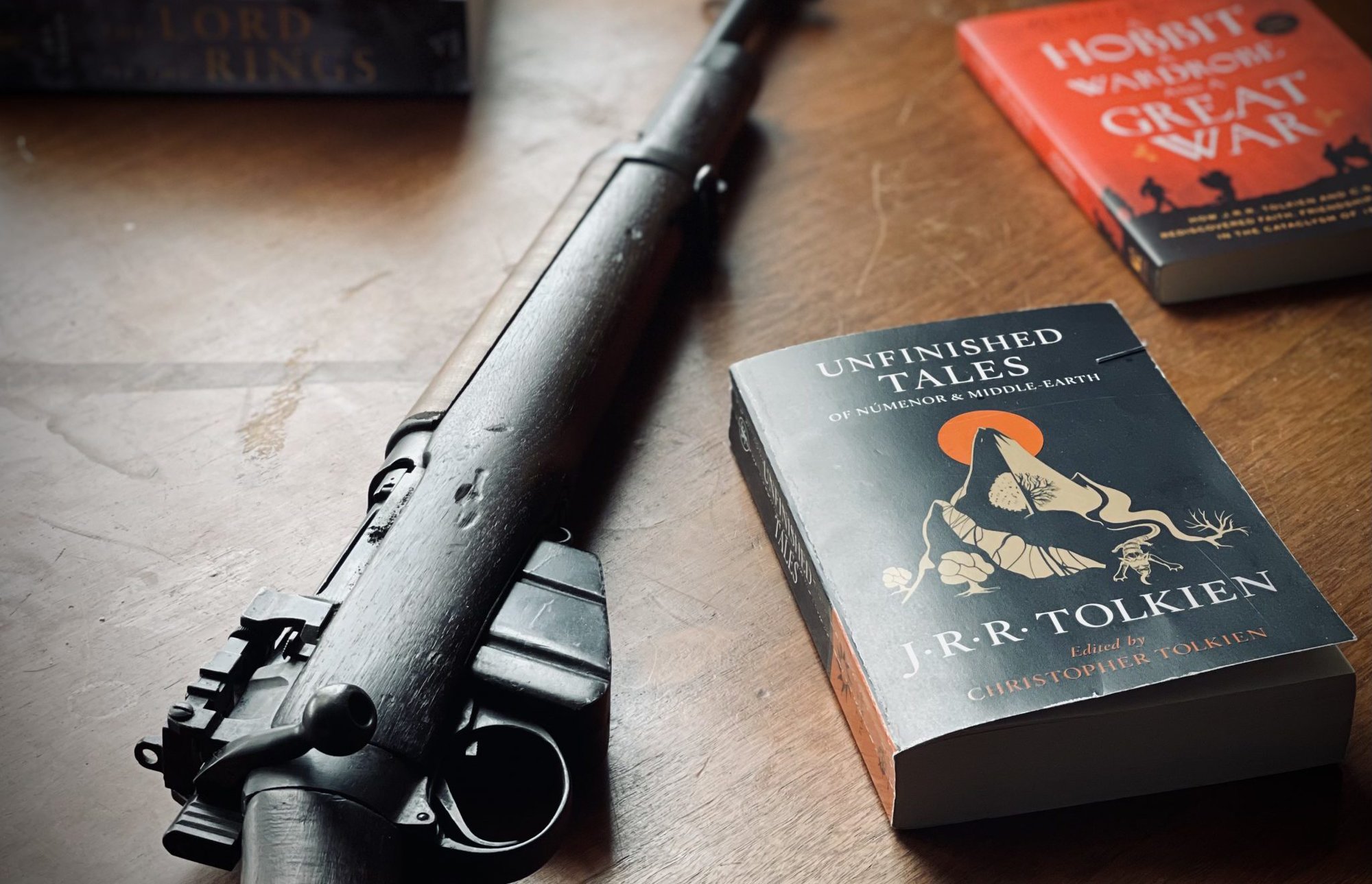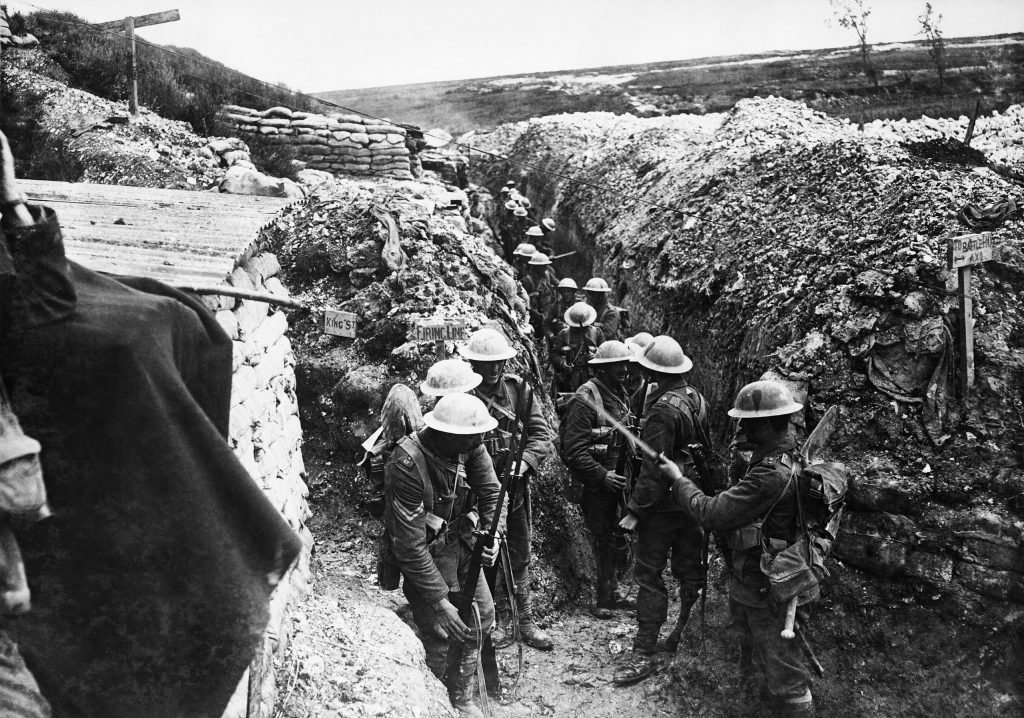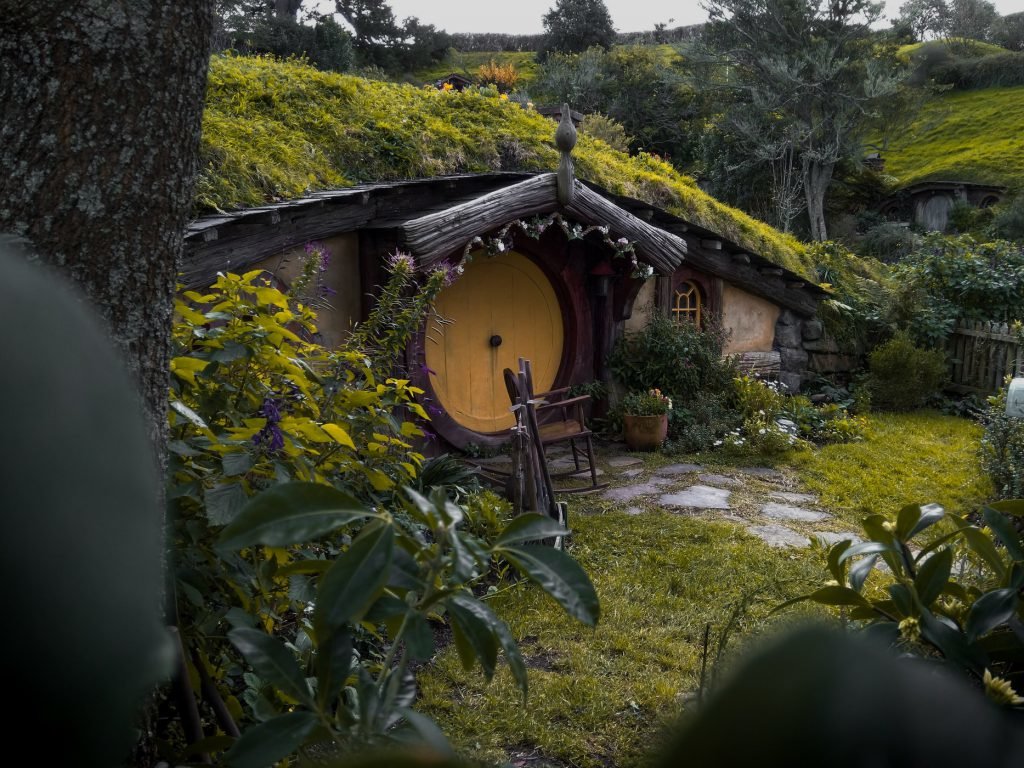J.R.R. Tolkien Started Building His Lord of the Rings Universe as a Soldier in WWI

Unfinished Tales contains some of J.R.R. Tolkien's earliest creations of Middle-earth. Photo by Mac Caltrider/Coffee or Die Magazine.
For five months in 1916, German artillery shells rained down on British trenches, contributing to the more than 1 million casualties incurred at the Somme. Futile attempts to seize ground were traded back and forth until England finally claimed one of the deadliest battles in history — a Pyrrhic victory. During the battle, a young J.R.R. Tolkien penned the foundation for Middle-earth.
“You might scribble something on the back of an envelope and shove it in your back pocket,” Tolkien wrote 50 years after the battle.
In the introduction for Unfinished Tales, his son Christopher Tolkien said one of those first scribbles was on J.R.R. Tolkien’s official orders while he was serving as a lieutenant in the 11th Battalion of the Lancashire Fusiliers. These small notes were the beginning of “The Fall of Gondolin”: Tolkien’s first story of Middle-earth.

Tolkien turned those early scribbles into a full story once he was evacuated from the front lines due to trench fever. Anything beyond scribbles was all but impossible while living in the trenches. Dispelling the common misconception that he wrote The Lord of the Rings while fighting, Tolkien once said the claims are “all spoof.” But the notes and scribbles he wrote on the backs of his orders marked the first descriptions of gnomes (later dwarves), elves, and epic battles between good and evil: essential elements to the rest of his work.
Just as he dispelled the myth of his writing The Lord of the Rings while in the trenches, Tolkien fervently denied the suggestion that his time under fire inspired him to create Middle-earth as an allegory for World War II.
“I cordially dislike allegory in all its manifestations, and always have done so since I grew old and wary enough to detect its presence. […] An author cannot of course remain wholly unaffected by his experience, but the ways in which a story-germ uses the soil of experience are extremely complex,” Tolkien wrote in the foreword to the second edition of The Lord of the Rings.

His experiences in World War I provided the seed for most of his work. In “The Fall of Gondolin,” the heroic unit of the House of the Hammer of Wrath is completely annihilated, a fate shared by Tolkien’s own company, the 11th Lancashire Fusiliers, who were destroyed at the Somme after his evacuation to Birmingham.
While Tolkien typically shied away from pointing out direct connections between his work and the war, he admitted in a letter that “The Dead Marshes and the approaches to the Morannon owe something to northern France after the Battle of the Somme.”
The Fellowship of the Rings, the first volume of The Lord of the Rings, was published July 29, 1954. The Two Towers followed on Nov. 11, 1954, and The Return of the King on Oct. 20, 1955. Since its release, Tolkien’s definitive trilogy has sold over 150 million copies, but the sapling of his “vast tree of tales” sprouted in the trenches of World War I over 100 years ago, scribbled on the back of his orders.
Read Next: Great Poets From ‘The Great War’ — The Story of Wilfred Owen and Siegfried Sassoon

Mac Caltrider is a senior staff writer for Coffee or Die Magazine. He served in the US Marine Corps and is a former police officer. Caltrider earned his bachelor’s degree in history and now reads anything he can get his hands on. He is also the creator of Pipes & Pages, a site intended to increase readership among enlisted troops. Caltrider spends most of his time reading, writing, and waging a one-man war against premature hair loss.
BRCC and Bad Moon Print Press team up for an exclusive, limited-edition T-shirt design!
BRCC partners with Team Room Design for an exclusive T-shirt release!
Thirty Seconds Out has partnered with BRCC for an exclusive shirt design invoking the God of Winter.
Lucas O'Hara of Grizzly Forge has teamed up with BRCC for a badass, exclusive Shirt Club T-shirt design featuring his most popular knife and tiomahawk.
Coffee or Die sits down with one of the graphic designers behind Black Rifle Coffee's signature look and vibe.
Biden will award the Medal of Honor to a Vietnam War Army helicopter pilot who risked his life to save a reconnaissance team from almost certain death.
Ever wonder how much Jack Mandaville would f*ck sh*t up if he went back in time? The American Revolution didn't even see him coming.
A nearly 200-year-old West Point time capsule that at first appeared to yield little more than dust contains hidden treasure, the US Military Academy said.












